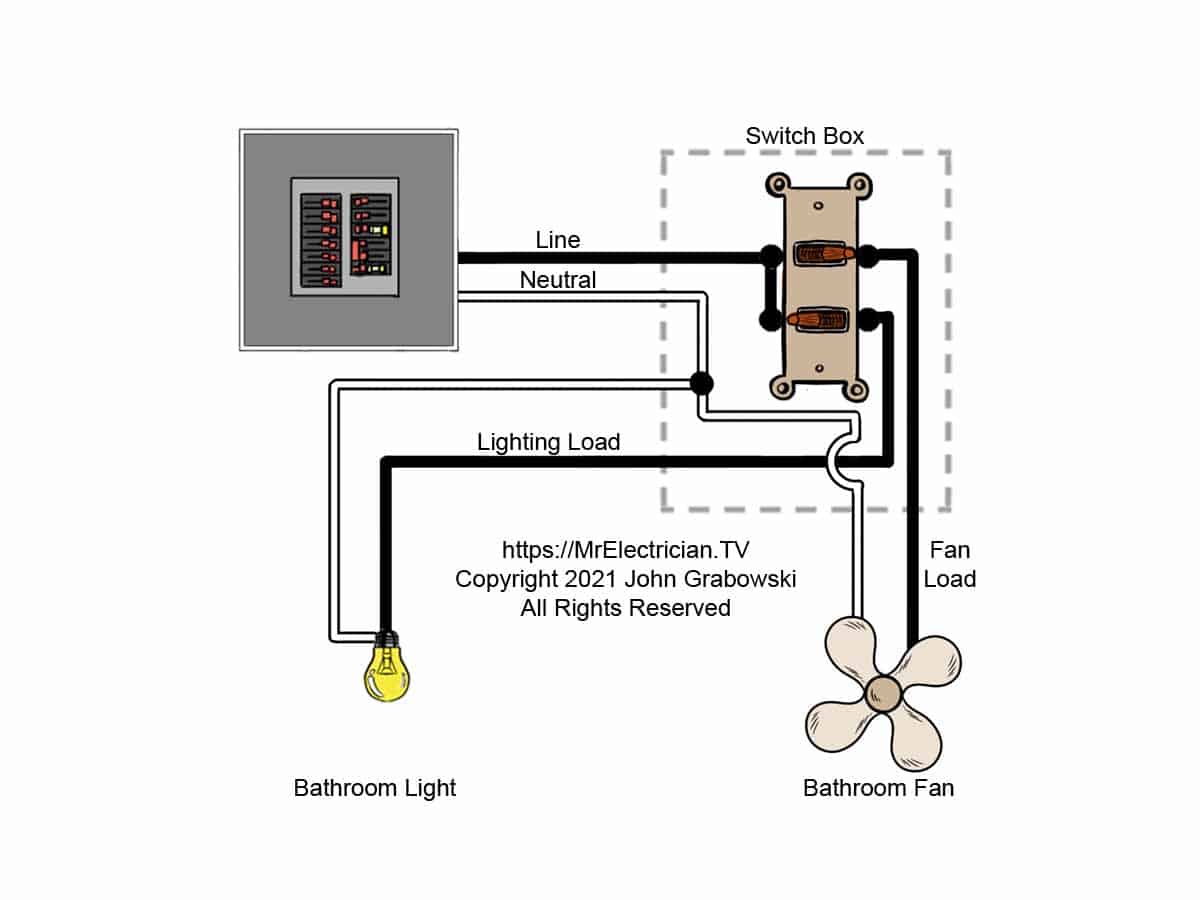Troubleshooting Common Causes: Bathroom Light And Fan Won T Turn On

Bathroom light and fan won t turn on – When your bathroom light and fan refuse to turn on, it can be a frustrating inconvenience. To restore illumination and ventilation, let’s embark on a troubleshooting journey to uncover the potential culprits.
Power Supply
- Ensure the circuit breaker or fuse associated with the bathroom is not tripped or blown.
- Check if the light switch is receiving power using a voltage tester or multimeter.
Switches
Light switches can malfunction due to wear and tear or loose connections.
As the bathroom light and fan remain stubbornly silent, I seek respite in the warm hues of fall. Fall bathroom decor invites golden leaves and cozy textures, a sanctuary amidst electrical woes. Yet, the darkness persists, a reminder of the practicalities that lie beyond the realm of aesthetics.
I return my attention to the silent fixtures, determined to restore the symphony of light and air.
- Remove the switch cover and inspect the wiring connections. Ensure they are secure and not damaged.
- If the switch appears faulty, replace it with a new one of the same type.
Wiring Connections, Bathroom light and fan won t turn on
Loose or damaged wiring can disrupt the flow of electricity to the light and fan.
- Inspect the wiring connections in the light fixture and fan motor.
- Ensure the wires are properly secured and not frayed or broken.
Replacing Electrical Components

Replacing faulty electrical components in a bathroom light and fan is a relatively simple task that can be completed in a few steps. However, it is important to take safety precautions when working with electricity, and to follow the manufacturer’s instructions carefully.
Before beginning any work, turn off the power to the bathroom at the circuit breaker panel. This will prevent the risk of electrical shock.
Replacing a Light Bulb
To replace a faulty light bulb, simply unscrew the old bulb and screw in a new one of the same wattage and type. Be careful not to overtighten the bulb, as this can damage the socket.
Replacing a Fan Motor
Replacing a faulty fan motor is a bit more involved than replacing a light bulb. First, you will need to remove the fan blade and motor assembly from the ceiling. This is usually done by removing a few screws that hold the assembly in place.
Once the fan blade and motor assembly is removed, you will need to disconnect the electrical wires from the motor. Be sure to note which wires are connected to which terminals, so that you can reconnect them correctly when you install the new motor.
Once the electrical wires are disconnected, you can remove the old motor and install the new one. Be sure to tighten the mounting screws securely.
Once the new motor is installed, you can reconnect the electrical wires and reinstall the fan blade and motor assembly. Be sure to turn on the power at the circuit breaker panel before testing the fan to make sure it is working properly.
Wiring and Electrical Circuit Analysis

The electrical connections for a bathroom light and fan are typically illustrated in a wiring diagram. Each component in the circuit has a specific function, and potential wiring issues can cause the light and fan to malfunction.
Electrical Components and Their Functions
The wiring diagram for a bathroom light and fan typically includes the following components:
- Power source: The power source provides electricity to the circuit.
- Switch: The switch controls the flow of electricity to the light and fan.
- Light fixture: The light fixture contains the light bulb and provides illumination.
- Fan: The fan provides ventilation.
- Junction box: The junction box houses the electrical connections.
- Wires: The wires connect the components in the circuit.
Potential Wiring Issues
Several potential wiring issues could cause the light and fan to malfunction:
- Loose connections: Loose connections can prevent electricity from flowing through the circuit.
- Damaged wires: Damaged wires can also prevent electricity from flowing through the circuit.
- Incorrect wiring: Incorrect wiring can cause the light and fan to malfunction.